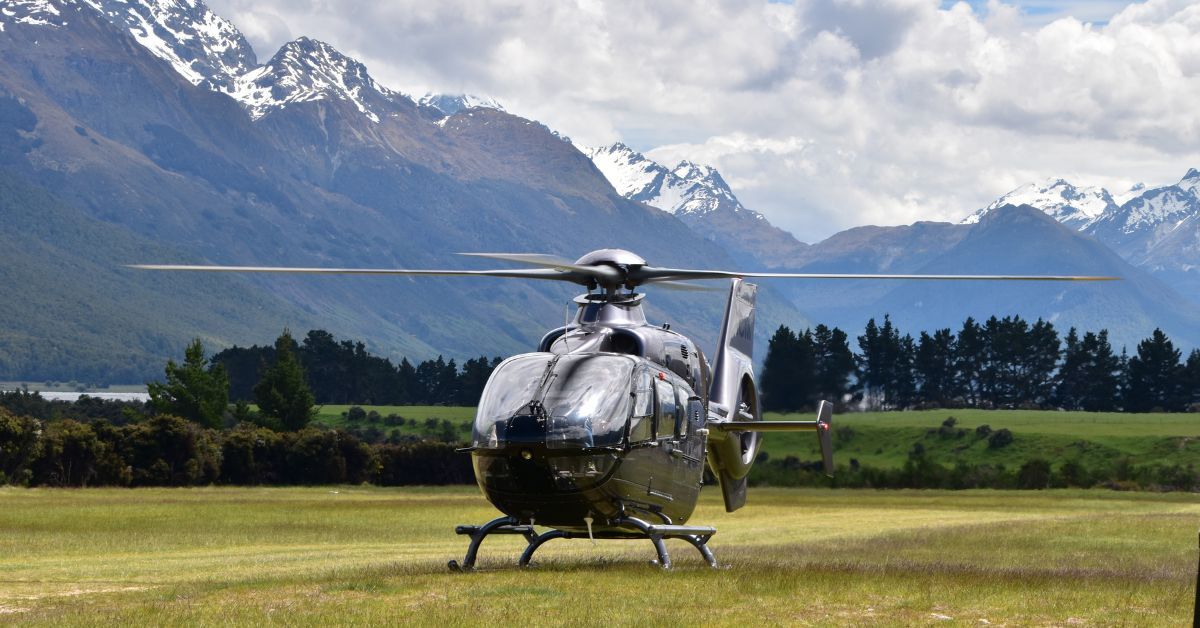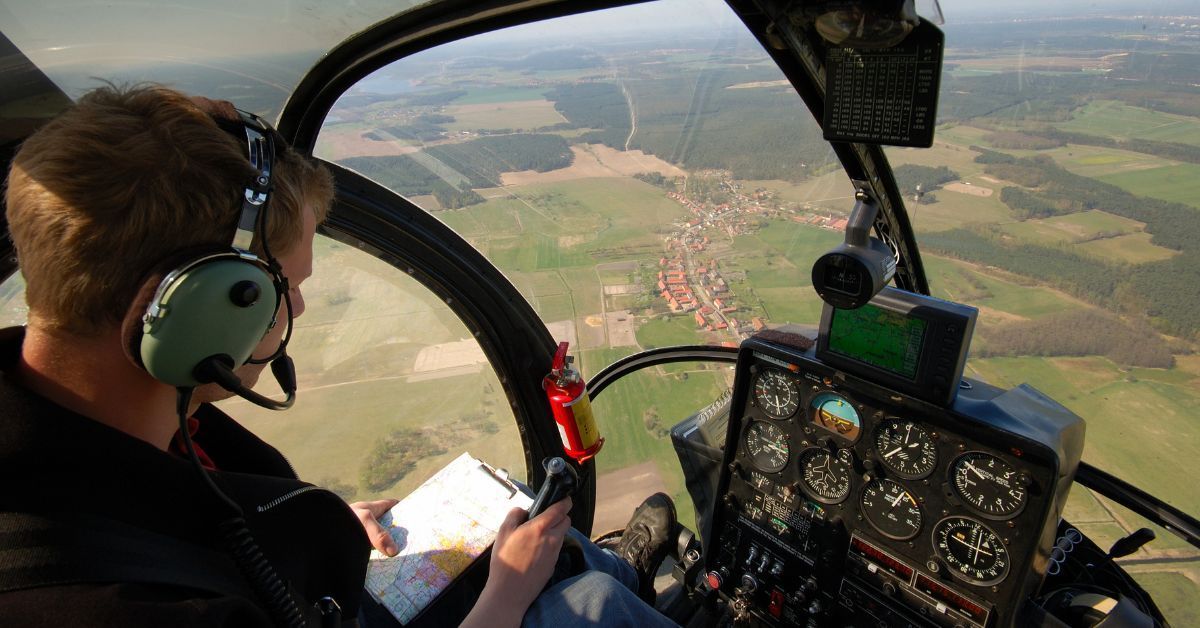Differences in Flying Helicopters in Urban vs. Rural Areas
Understanding the Fundamental Environment Differences
Urban and rural helicopter operations present distinctly different challenges that every pilot must master. Cities create complex airspace environments with tall buildings, dense air traffic, and multiple restricted zones. Rural areas offer open spaces, but they also introduce unique hazards, such as unmarked obstacles, wildlife, and unpredictable weather patterns. Pilots who understand the differences in flying helicopters in urban versus rural areas know that they must adapt their skills, planning methods, and decision-making processes accordingly.
Airspace Complexity and Traffic Management
Urban airspace presents a complex network of controlled zones, temporary flight restrictions, and high-density traffic corridors. Pilots navigate through Class B, C, and D airspace while coordinating with multiple air traffic control facilities. Communication requirements intensify, as pilots must maintain contact with approach control, tower controllers, and sometimes numerous agencies simultaneously. Rural operations typically involve less controlled airspace but require greater self-reliance in traffic avoidance and navigation.
Metropolitan areas feature established helicopter routes, noise abatement procedures, and specific altitude restrictions for different flight phases. These predetermined corridors can help you manage traffic flow, but limit operational flexibility for pilots planning their routes. Rural flights allow more direct routing, but demand increased vigilance for other aircraft operating under visual flight rules. Pilots must develop different scanning techniques and communication strategies to ensure safety in each environment.
Navigation Challenges and Landmark Recognition
City flying relies heavily on prominent landmarks, such as skyscrapers, bridges, stadiums, and major highways, for visual navigation. These structures create reliable reference points but can also cause confusion when multiple similar buildings exist. Urban pilots develop skills in reading city grids, identifying unique architectural features, and using GPS systems effectively. Navigation planning involves studying sectional charts alongside detailed city maps to understand the relationship between ground features and the surrounding environment.
Rural navigation requires different techniques, as rivers, ridgelines, forest boundaries, and other natural landmarks become primary references. Pilots must account for seasonal changes that alter landscape appearance, such as snow cover or foliage variations. Agricultural areas present challenges due to fields and farm structures that are visually similar, which can confuse visual navigation. Comprehensive helicopter flight training in Colorado prepares pilots to navigate mountain terrain and urban corridors effectively.

Weather Pattern Variations and Microclimates
Urban environments create unique microclimate conditions that significantly impact helicopter operations and flight planning decisions. Concrete and asphalt surfaces generate heat islands, causing thermal updrafts and turbulence around tall buildings. Building-induced wind patterns create unexpected downdrafts, crosswinds, and mechanical turbulence that challenge pilot skills. Pollution and smog can reduce visibility, particularly during temperature inversions common in metropolitan areas.
Rural operations face distinct meteorological challenges, including rapidly changing weather systems and limited weather reporting stations. Pilots must interpret broader weather patterns and make decisions with less real-time atmospheric information. Mountain and valley effects in rural areas create orographic lifting, wind shear, and sudden changes in weather. Agricultural areas may experience dust storms, crop dusting, chemical drift, and seasonal visibility restrictions.
Obstacle Identification and Avoidance Strategies
Urban obstacle environments consist primarily of man-made structures with well-documented heights and locations on aviation charts. Buildings, communication towers, construction cranes, and power lines create predictable hazard patterns that pilots study extensively. However, construction activities constantly change the urban landscape, requiring ongoing awareness of temporary obstacles and restricted areas. Night operations in cities benefit from extensive lighting, but they can also create visual illusions and challenges to depth perception.
Rural obstacle identification requires heightened awareness of unmarked hazards, including power lines, communication towers, and agricultural equipment. These obstacles often lack adequate lighting for nighttime operations and may not be visible on current charts. Pilots must develop skills in identifying wire patterns, recognizing tower guy-wire configurations, and spotting agricultural infrastructure. Wildlife poses additional challenges in rural areas, with bird strikes and encounters with large animals affecting flight operations.
Emergency Landing Site Selection and Procedures
Urban emergency landing sites present limited options with small parks, parking lots, and rooftop areas requiring precise approach skills. Pilots must quickly identify suitable areas while considering public safety, power lines, and emergency responder access routes. Urban emergency procedures involve immediate coordination with multiple agencies, including police, fire departments, and emergency medical services. Hospital helipads provide excellent emergency destinations but require specific approach procedures and medical coordination protocols.
Rural emergency landing options typically offer more space but may lack immediate emergency response capabilities. Open fields, pastures, and dirt roads provide landing opportunities, but they require careful assessment of surface conditions. Pilots must consider soft ground, irrigation ditches, livestock, and property owner concerns when selecting sites. Remote area emergencies often require self-reliance in the initial response while awaiting the arrival of emergency services from distant locations.

Communication Requirements and Radio Procedures
Urban helicopter operations require complex radio communication skills, as multiple air traffic control facilities manage busy airspace. Pilots coordinate with approach control, tower controllers, flight service stations, and company dispatch systems throughout their flights. Radio congestion requires precise communication timing and the ability to extract relevant information from busy frequencies. Emergency frequencies and backup communication methods become critical in high-density airspace environments.
Rural communication challenges include limited radio coverage, fewer air traffic control services, and reliance on common traffic advisory frequencies. Pilots develop skills in position reporting, traffic advisories, and coordinating with other aircraft using standardized phraseology. Remote area operations may require satellite communication systems or emergency locator transmitters for safety backup. Flight following services become increasingly critical in rural areas where radar coverage is limited.
Regulatory Compliance and Operating Procedures
Urban helicopter operations are subject to extensive regulatory requirements, including noise abatement procedures, altitude restrictions, and specific route compliance. Cities often impose additional operating limitations beyond federal aviation regulations to address community concerns and safety issues. Pilots must understand local ordinances, temporary flight restrictions, and special use airspace, which frequently change in metropolitan areas. Commercial operations require additional permits and coordination with city planning departments.
Rural operations typically involve fewer local restrictions but require a greater understanding of federal regulations governing flights in remote areas. Agricultural operations, wildlife surveys, and utility inspections each carry specific regulatory requirements and safety considerations. Pilots must understand minimum altitude requirements over sparsely populated areas, wildlife protection regulations, and environmental compliance issues. Remote area operations often require additional safety equipment and communication capabilities beyond standard requirements.
Training Considerations and Skill Development
Transitioning between urban and rural helicopter operations requires comprehensive training that addresses the unique challenges of each environment. Urban training emphasizes air traffic control procedures, high-density airspace navigation, and precise approach techniques for confined landing areas. Students develop skills in radio communication, chart interpretation, and emergency procedures specific to metropolitan environments.
Rural training focuses on weather interpretation, obstacle identification, and self-reliance in decision-making processes where external support may be limited. Navigation skills emphasize the recognition of landmarks, proficiency in GPS, and an understanding of natural weather patterns that affect flight operations. Emergency procedures training covers remote area landings, survival techniques, and communication methods for areas with limited infrastructure support.
Conclusion
Successfully operating helicopters in both urban and rural environments requires pilots to develop a diverse set of skills and maintain proficiency across various operational challenges. Each environment presents unique advantages and limitations that influence flight planning, safety procedures, and emergency response capabilities. Professional helicopter pilots must continuously adapt their techniques and maintain currency in both operational environments to ensure safe and efficient flight operations throughout their careers.
